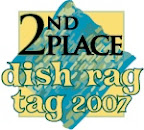I took my iPad to places it's never been before today. Hooked up to a projector, paging through Keynote slides, playing movie clips. Those are things I know how to do on a computer, and that familiarity has bred comfort. I'm confident that I can get the desktop extended or mirrored on the projection screen, that I can bring up the items I want to display, that I can switch between media.
But not until I did all those things on my iPad did I realize how much harder I had to work to do those things on a computer. With the monitor duplicated or extended, you have to work hard at showing the audience only what you want them to see, not the logistics behind the scenes. Take movie clips; I normally do this by bookmarking scenes on DVDs, switching the DVDs out one by one, letting the DVD load, selecting the bookmark, and all the while finding a way to cover the projector or get this all done on the monitor screen so that my audience isn't distracted by watching all this activity.
The iPad doesn't allow video out except for Keynote presentations and playing videos. That's a bug for some uses, but a definite feature for the way I used it today. The audience sees only what you intend to present -- not the desktop, not the application around it, not menus, not cursors It allows you to perform, not operate a computer in public. When the clip is over or the presentation ends, the iPad stops projecting. No more seeing "End of slideshow, click to exit" or the Powerpoint navigation view -- sights we've all come to expect, yet which nevertheless remain suboptimal, jarring, unprofessional.
I spent 100% less time keeping track of my technology -- to start and stop it at the right time, to navigate to what I wanted, to push buttons and keep the flow of the session moving at the same time -- and 100% more time focusing on my audience. That's the iPad magic that it's hard to show in a commercial, harder to explain, since it relies on recognizing a problem that most of us elide as unavoidable and therefore forgivable. Sometimes it takes a different approach, a different tool, to make you aware of how many compromises and work-arounds you were enduring before.
Subscribe to:
Post Comments (Atom)





No comments:
Post a Comment